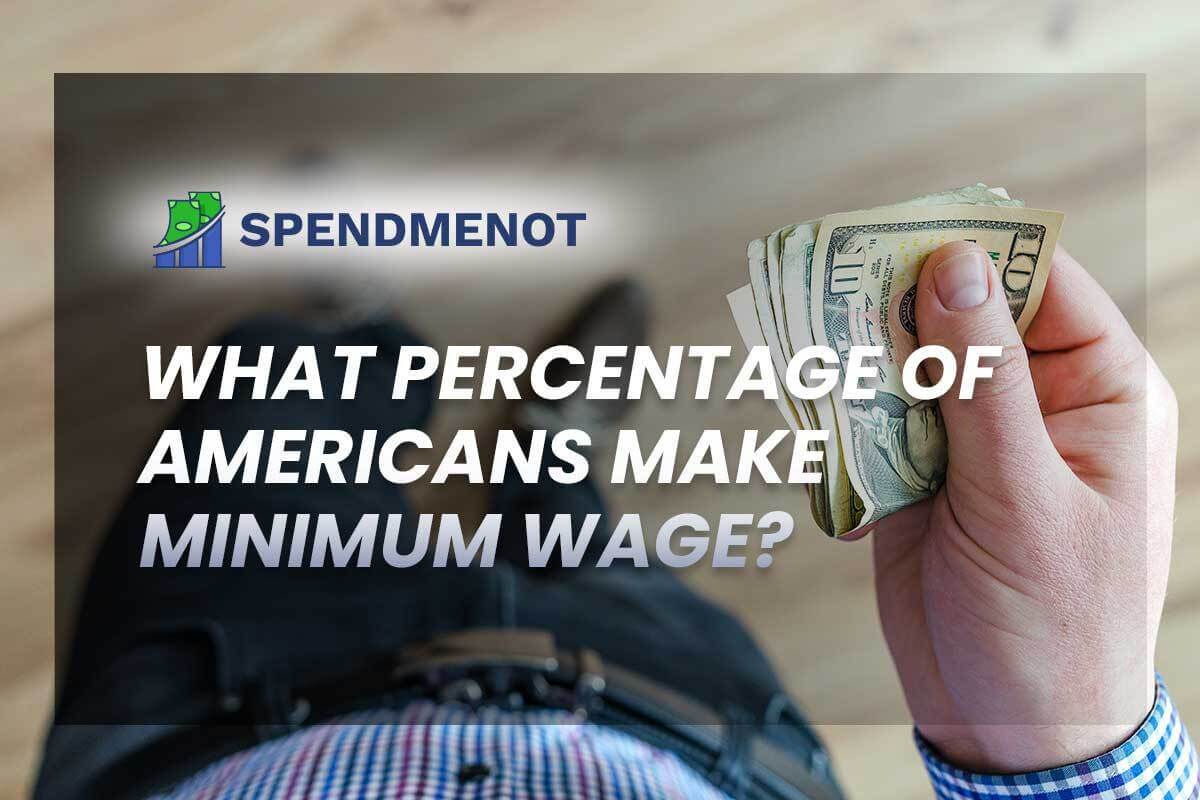15 Car Loan Statistics to Drive Through in 2023
Last Updated: March 10, 2023
Do you want a shiny new car?
Your dream vehicle might be just an auto loan away. Buying a car has never been more simple!
However:
Getting into long-term debt is also getting easier.
Let’s see:
We gathered the most interesting car loan statistics for you to check out today!
Let’s take a quick ride through the key American auto loan statistics:
AMAZING Car Loan Statistics (Editor’s Pick):
- The average new car loan amount is $35,163.
- The average car payment in America is $575.
- Currently, the average car loan length is just over 69 months.
- Americans owe over $1.37 trillion for their cars, and the total auto loan is rising every year.
- Banks finance over 30% of the US car loan market.
Bottom line:
Automobile debt is here to stay (and grow). But is this a smart way to finance your car… or should you start growing your savings instead?
That depends on who you ask.
One thing is for sure, though, auto loans are looking more enticing than ever, and Americans are taking advantage.
Now, let’s delve deeper into some mind-blowing auto loan statistics!
What Is the Average Car Loan?
The national average won’t apply to everybody.
It’s one thing to buy a used car with an excellent credit score. It’s a completely different story to finance a luxury vehicle with a freelancer’s salary.
Spoiler alert:
The “auto loan bubble” won’t help you if your FICO score is dreadful.
However, this is not the only thing that determines how much your car loan will cost:
1. The average new car loan rate is 4.09%.
(Source: Experian)
The average APR for auto loans varies depending on what car you buy. Why? Because with age, vehicles tend to become less reliable.
Your credit score also determines the loan rate. The lower your score, the riskier as a borrower you are and the higher interest you get.
For example, average new car loan statistics show that with a Super Prime profile (781-850 credit score), you can expect an average rate of 2.34%. At the other end of the spectrum, Deep Subprime (300-500 credit score) borrowers get 14.59%.
The third important factor affecting car loan interest is the term. Longer periods do come at a higher price. The average 72-month auto loan APR is almost 0.3% higher than the typical 36-month loan’s interest rate.
2. The average US car payment is $575.
(Source: Experian)
The average car note has increased since 2020. We are paying more per month for both used and new vehicles:
- In 2021, a new car would cost you $575 per month (an increase of 0.9% from last year).
- The average monthly used car payment is $430 (8.3% more than last year).
Yes, it’s getting more expensive to buy a car with borrowed money.
That said, the rates for car loans are consistently low and affordable. When you look at data from the past decade, you notice a steady decline.
Why?
It’s mostly because of the 2009 crisis. Loan rates decreased back then as a means of encouraging people to spend and help the economy.
But what’s the point of offering cheap loans? Why would a bank/credit union do that?
Because financing institutions make money on the purchase, not the interest. Large car manufacturers even have “captive finance” arms (GM Financial, for example), and they exclusively offer loans for the parent company’s cars.
More people that can afford cars = more sales = bigger revenue.
3. The typical auto loan term is 69.36 months.
(Source: Experian)
Terms depend on the age of the car, remember? The older the vehicle, the more likely it is to fail within the next few years. It is also a lot less reliable car when compared to new models.
Financing an old vehicle means a higher interest rate AND shorter car loan periods.
Again, this is because of car failure risk.
The typical used car loan length is 64.41 months.
Car leasing, on the other hand, is the most short-term option. The average lease only lasts around three years!
4. The average new car loan amount is $35,163.
(Source: Experian)
The 2021 figure is 2.65% lower than the $36,121 average in 2020.
And what about used cars?
Interestingly, the average financed amount for used vehicles increased by almost 10% in the same period! As of the second quarter of 2021, consumers borrow $23,365, on average.
5. Borrowers have an average credit score of 732.
(Source: Experian)
That’s for new vehicles. And the average credit score for a used-car loan is 665.
The median credit score has never been higher. Ever since the Federal Reserve started collecting data on the auto loan industry (in 2000), the average credit score has been on the rise.
But here’s the kicker:
6. 23% of all automobile debt comes from buyers with 780+ credit scores.
(Source: Experian)
Prime and super-prime borrowers account for 65% of total financing, while subprime continues near record lows at 3%.
This is a major change in tides. For years, car loan statistics would show growth coming from all sorts of borrowers. This year, subpar borrowers are being pushed out of the market, while buyers with great credit are the driving force.
Now:
Does this mean subpar borrowers no longer take out auto loans?
No way!
Credit inquiries and auto loans participation is at a record high. Yes, lenders are tightening their rules and increasing their rates for people with low credit scores. Even so:
7. Auto loan originations rose over 16% in Q2 2021.
(Source: TransUnion)
Americans want cars, that’s for sure. Only mortgages and student loans have larger loan balances.
In the second quarter of 2021, there were 7.4 million originations, which is 16.3% higher than the 6.3 million in the same period a year ago. Apparently, the US auto finance industry is bouncing back after the pandemic’s adverse effect on the economy in 2020.
We are taking out more loans, and delinquency is remaining low.
So… good news, right?
On a surface level, absolutely. But here is the thing:
Car Loan Statistics Might Be… Lying?!?
No, I did not just make up the data in this article. You can look it up if you don’t trust me (the sources are all linked down below and freely available).
And yes, it’s true: on a surface level, USA auto loans are doing great.
Delinquency rates have remained below 5% since 2010.
However, it turns out there are massive age and income group differences. Cars may be essential for the ‘American life,’ but not everybody can afford them, even on borrowed money.
8. “Serious delinquency” – the failure to make your car payments for 90+ days, is at 4.35%
(Source: Center for Microeconomic Data)
This is much lower than student loans and credit cards. It’s all going great, right? The auto loan industry has never had better borrowers, and delinquency rates are at a steady low!
But here’s the thing:
People aren’t struggling to make their car payments as much as they are with student loans. However, delinquency rates are on the rise among subprime borrowers.
9. If you’re under 30, you’re 50% more likely to default on your auto loan.
(Source: Center for Microeconomic Data)
Young people are struggling to pay for their cars. Millennials are 50% more likely to fall into delinquency than their older counterparts.
But youngsters have always struggled financially, haven’t they?
It turns out that no, they have not.
Up until 2014, the car loan default rates were similar, regardless of your age. The fact that millennials increasingly can’t afford auto loans is indicative because car ownership is a key indicator of wealth.
Car owners make three times more than non-owners.
Vehicles are a financial burden for low-income families and a status symbol for upper-middle-class citizens. The average car loan monthly payment of $575 is way above the recommended maximum for low-income individuals and families.
Speaking of which:
10. Middle-class families are most likely to ask for a loan.
(Source: Supermoney)
Middle America is the driving force behind the growth in the auto loan industry. Buyers with the best credit score take up the lion’s share of all automobile debt — middle-class folks are more likely to be in that group. Subpar borrowers, on the other hand, are struggling more than ever.
But income isn’t the only factor:
11. Gen Xers take out most car loans and have the highest loan balances.
(Source: LendingTree)
Is this really surprising?
Gen X is more likely to have the credit for a purchase like this. They’ve had longer to make savings and see them grow. Even if Gen X may be the “sandwich generation” – taking care of their millennial kids and aging boomer parents, they are still better off financially than younger people, and it shows.
Almost half (49.5%) of Gen Xers have an auto loan. Their car loan balances are also the highest, with an average of $19,233!
The silent generation has the lowest auto debt, even with 33% of its cohort having a car loan. Their median loan balance is $13,203.
Now that we know about the borrowers, let’s talk about the lenders:
Surprising Car Loan Industry Facts
Buyers can pick among a vast array of financing options – from good old banks to online lenders and even the car dealership itself.
You might be wondering:
Which is the best option for me?
It’s not a straightforward answer – it depends on your financial history, what you can afford right now, and what kind of car you’re aiming for.
However, car loan statistics are clear on one thing:
12. Banks financed almost 31% of car loans in America in Q2 2021.
(Source: Statista)
They’re not as flexible or open-minded as credit unions, but banks still hold the lion’s share of the US auto finance market.
However, an almost equally large share was granted by captive finance during that same period.
The stats are different, depending on the car, though:
- In-house financing divisions offer loans for both new and certified pre-owned cars. They sometimes offer impossibly great deals – even 0% APR! Of course, these promotions aren’t an option for banks, but they make good money for the manufacturer:
0% APR gets people in the door. - It supercharges sales.
- Low or no-interest loans can help clear out old stock (maybe you’ve noticed that cars do take a lot of space)
Now, here’s the twist:
13. “Buy here, pay here” is the least popular financing option with only 10%.
(Source: Statista)
With the “buy here, pay here” option, the dealership lends you the money for your car. It’s a one-stop solution that means you don’t have to deal with multiple parties – instead, your car dealership handles everything.
Convenient, huh?
Well, people aren’t that convinced.
According to auto loan statistics, just 10% of borrowers have opted for “Buy here, pay here” car financing.
Why?
- Car dealerships offer the highest interest rates.
- They often throw in extra fees.
- The fine print can contain some pretty… surprising terms and conditions.
There are some perks to dealership financing, however. It can open doors to much better car options for people with subpar credit. For instance, there is no minimum Tesla financing credit score!
“Buy here, pay here” is just another way for dealerships to make money. In fact, add-on services are emerging as a new income stream for them. F&I profit per vehicle is on the rise by up to 10%!
14. The global auto loan industry is expected to reach $394 billion by 2028.
(Source: Research and Markets)
Following the surge of 2011, the lending industry’s growth has been stalling. Every year it drops by 3%. 2018 saw a 4.4% growth, which sounds great until you compare it with 2016’s impressive 8.6%.
But what does the future hold?
According to estimates, the global automotive finance market is set to expand at a CAGR of 7% from 2021 to 2028, reaching $394.06 billion by the end of the period.
15. 27% of banks reported an increase in borrower demand in Q3 2021.
(Source: Federal Reserve Economic Data)
Over a quarter of the 100+ financial institutions surveyed notice an increase in demand compared to the previous year.
The boom of the early 2010s may be coming to an end, but it has left a mark:
16. Automobile debt grew by 80% in the last decade.
(Source: Experian)
Despite changes in consumers’ daily travel and commuting habits during the Covid-19 pandemic, the automotive financing market didn’t experience major disruption similar to what occurred with other types of consumer debts.
In 2021, Americans owe a record $1.37 trillion for their cars. Compared to 2010, this is an increase of 80%!
The average individual auto loan debt also grew in the past year — from $19,865 to $20,499.
17. Wyoming is the most expensive state for car loans.
(Source: Doxo)
Wyoming is the most expensive state for auto loans, with consumers’ average monthly bill of $559. Alaska and North Dakota follow closely, with $485 and $478, respectively.
At the other end of the spectrum is Ohio, where the average car loan costs $357 a month. Indiana comes second in the list of least expensive states for auto financing, with citizens paying $355 a month, on average. Delaware follows at $352 a month.
Key Takeaways
The auto loan statistics are clear:
Americans still want to borrow money for a car, but not nearly as much as they did before.
With the stalled growth, we’re unlikely to see the same growth in car debt that we did in the past decade. The 30% growth in 2011 is a distant dream for most institutions.
Now, they are playing it safe and conservative. Prime borrowers are getting the best deals, while people with bad credit have fewer options than ever. Young people are markedly less interested in car loans, and they’re less likely to be able to afford them, too.
But there are more concerns:
FAQ
Subprime auto lending is causing concern. So much so that some call it the next housing crisis.
Seven million Americans are three months behind on their car payments.
This is 1 million more than they were in 2010!
Loan performance is sliding, and subprime borrowers are to blame. The difference becomes immediately clear when you compare delinquency rates among different credit score groups.
The question is:
Can it cause problems?
Some experts suspect it will. We are taking out more loans but are getting progressively worse at repaying them. This is exactly what happened before the “Great Recession” of 2008.
It gets worse:
In 2016, the average household could only pay for half of their car! Three out of four Americans considered new vehicles to be unaffordable.
And yet, we see cars as more than a means of transportation – they are a status symbol. Large and expensive automobiles are flooding showrooms. With multiple financing opportunities, luxury vehicles are becoming available to more people.
But should they? Not if you can’t repay the money!
When this happens on a large scale, the risk of an economic crisis grows.
You might be asking yourself:
First of all, relax. Trying to predict a recession is nearly impossible. While some experts suggest that car loans will create problems for the economy, others claim the concerns are exaggerated.
Either way, the best way to protect yourself is to save more, spend less. Which means reduce your consumer debt for a more stable financial future.
The average car payment per month in America is $502.5, which is an increase compared to 2020. Interest rates are also expected to grow further, so be wise about what you can afford:
- Typical monthly payments for a new car are $575.
- Used cars will set you back $439 per month on average.
It all depends on how much you make. There are handy calculators online that can help you budget – like this one!
A general rule of thumb is no more than 10% of your monthly pay (after taxes).
Does this seem too low? An alternative approach is spending 50% of your take-home salary on necessities. Your car payment is one of them! Provided that you’re spending less elsewhere, you can increase your car loan budget and even finance several cars at the same time.
But make sure you have some job stability to be able to afford it in the long term!
Yup, this is a follow-up from the last question.
The answer is 2.2 million vehicles!
This means 3.76 repossessions a minute.
It could happen to the best of us, so plan your budget carefully (and ahead of time). You could possibly get a high-end car, but your options might be limited.
In 2021, the average term is 69.36 months or 6+ years.
You can expect less if you’re buying pre-owned, though. The average used car loan term length is 64.41 months. Bear in mind that banks might not offer to finance old cars for such long terms. This is why credit unions are the preferred option for used car buyers!
Ultimately, the decision to take out a loan, as well as the shopping around for the best deal, is up to you. If you want to be smart about it, though, remember to read the fine print and be brutally honest about your budget.
Different people have different needs, but if there is one thing car loan statistics of 2021 can teach you, it should be:
It’s not the time to be reckless with your automobile debt.
Good luck, and I hope 2021 brings you a cool new car… One that you can surely afford!
See you around on SpendMeNot.com, guys!










